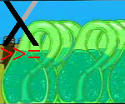Товарищи я никогда ранее не работал в Linux. Но в институте появился очень хороший предмет «Операционные системы» и ведет их очень нехороший преподаватель помешанный на Unix. И он мне задал вопрос: «Что делает команда file?» Ответы типа «Она выводит тип файла....» не прокатывали потому что он наверное думает что студенты должны знать больше чем он сам. Я ему 6 часов по всякому объяснял что она «Она выводит тип файла....» но ему пох. Он мне втирал про какой-то механизм связанный с этой командой который я каждый день юзаю не задумываясь и просил его назвать еще втирал про то что если бы она выводила только тип файла то она вообще была бы бесполезной и еще много псевдо-научного бреда. Товарищи помогите пожалуйста мне глупому с этой командой.. Расскажите пожалуйста все что знаете об этой команде.

Ответ на:
комментарий
от athost



Ответ на:
комментарий
от Absolute_Unix

Ответ на:
комментарий
от lodin

Вы не можете добавлять комментарии в эту тему. Тема перемещена в архив.
Похожие темы
- Форум команда file (2007)
- Форум Команда file. Файл magic.mgc (2012)
- Форум Команда file * для всех файлов в поддиректориях (2008)
- Форум .files (2018)
- Форум file: (2009)
- Форум files (2004)
- Форум Приглашение на бесплатные курсы системного программирования в НИВЦ МГУ (2008)
- Форум grep file > file = null (2009)
- Форум Приглашение на бесплатные курсы системного программирования в НИВЦ МГУ (2009)
- Форум Приглашение на бесплатные курсы системного программирования в НИВЦ МГУ (2007)
